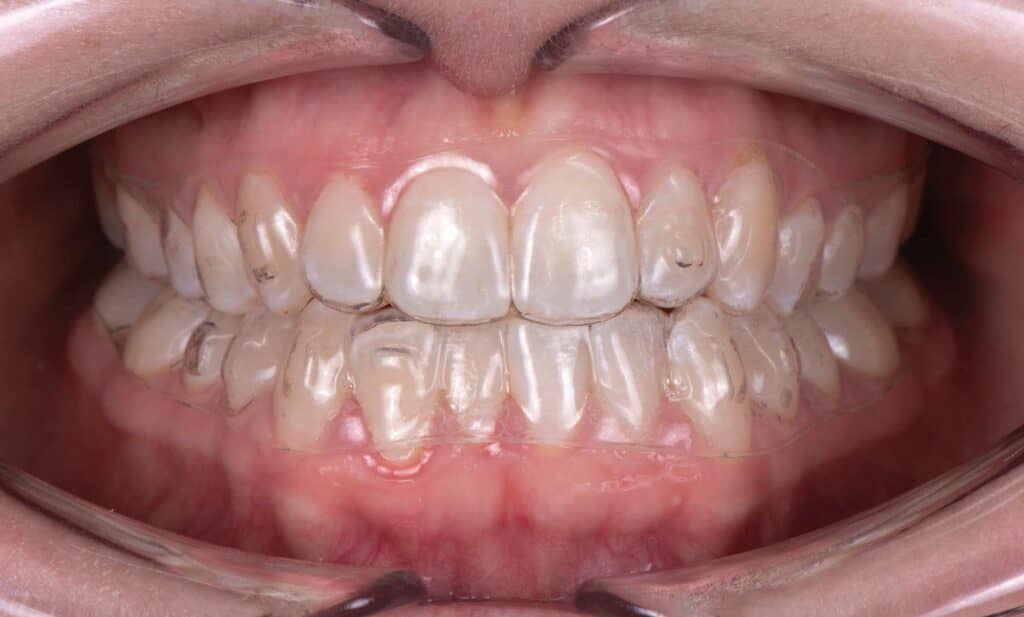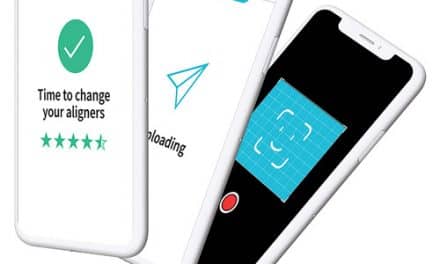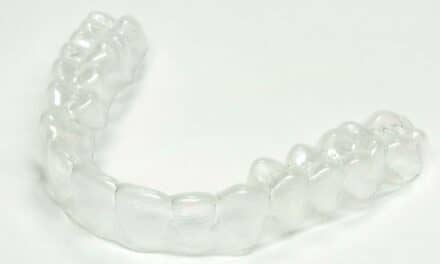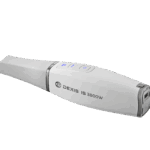Working with SureSmile and the SureSmile Ortho platform to meet adult patient expectations for treatment.
By Antonino G. Secchi, DMD, MS
More and more often, adult patients come to orthodontic practices to improve their smile. Many patients know that this is easily possible with aligners and specifically ask for them. In my practice, I find SureSmile Aligners, from Dentsply Sirona, offer an effective therapy option at this point that promises a significantly more comfortable treatment experience compared to conventional fixed appliances. As an orthodontist, I have been working with SureSmile and the SureSmile Ortho platform since it was introduced in 2018. The following case describes the system’s possible applications.
Figure 1 Figure 2 Figure 3
Initial presentation—Figure 1: Lateral view: The patient showed a moderate Class III pattern. Figure 2: Frontal view: the lower half of the face was stronger than the upper and middle facial third heights. Figure 3: Smile analysis: well-balanced and harmonious, Class III pattern fades into background.
Case Report
A 27-year-old female patient presented to my practice, hoping aligners would be recommended to address her orthodontic concerns. The patient was not happy with the alignment of her front teeth. She had a relapse after previous orthodontic treatment with fixed braces provided by another practitioner. She was about to get married and wanted to have a perfect smile for her wedding day.
Figure 4 Figure 5 Figure 6 Figure 7a Figure 7b
The facial evaluation of the patient showed that the lower half of her face was stronger than her upper and middle facial third heights (Figures 1 to 3). The patient presented as a Class I with a moderate Class III pattern. When smiling, the face was very harmonious and the Class III pattern faded. Intraoral examination revealed moderate crowding of the lower incisors 33-43 (Figures 4 to 7), and a shallow overbite. The patient was skeletally well balanced, and the condyles were in the correct position (Figure 8). Both dental arches were narrow. The teeth showed no defects or caries, and the gums were healthy.
Figure 8a Figure 8b
Treatment Process
The patient agreed to treatment with SureSmile Aligners as I recommended. The priority of the treatment was to improve the alignment of the upper and lower incisors, especially the retrusion of the lower incisors, and the flat overbite. The challenge was to level and align the lower arch while improving the overbite. The arch discrepancy in the lower arch was addressed with IPR, but only in the mandible from 33 to 43, to align the incisors and keep them from proclining.
In order to ensure accurate anamnesis, cone beam computed tomography (CBCT) was used for the diagnostic records of each patient. This 3D radiographic image helped me to visualize and evaluate the patient’s teeth, root and bone structure, TMJ, sinuses, nasal cavity, alveolar nerve canal, and all related anatomy. The images were acquired using the Orthophos SL 3D X-ray unit. I used Primescan (Dentsply Sirona) for digital impression taking and for an accurate visualization of the intraoral situation.
A CBCT and the intraoral scan were then uploaded to the SureSmile software for the creation of the treatment plan of the maxillary and mandibular aligners to create the first diagnostic model for the classification of the SureSmile Aligners.
The SureSmile software can simulate the movement of each tooth in individual steps. The program calculates the most direct path to a desired target position. This calculation can be either accepted or modified depending on the doctor’s experience and treatment plan.
Thanks to the accuracy of the SureSmile treatment plan proposals, fewer changes were needed to be made resulting in time saved communicating changes with the technicians. The aligners fit very well, and the movements were more precise than in my previous experiences with clear aligners. With SureSmile Aligners, I have the option to order full-service aligners or in-office, “DIY” aligners. For those choosing the in-office option, they can order the 3D-printed model or print them from an STL file provided in the software. SureSmile is extremely versatile and cost-effective when it comes to the final result.
Figure 9 Figure 10 Figure 11 Figure 12 Figure 13 Figure 14
All data was uploaded to the SureSmile Ortho platform. The SureSmile Aligner treatment plan was created and approved for both maxillary and mandibular arches (Figures 9 to 14). A total of 17 aligners for maxilla and mandible were planned.
In creating a comprehensive digital treatment plan using the SureSmile software we as clinicians can establish an achievable targeted finish. The individual stages in the aligner sequence can be analyzed throughout the treatment and compared with the patient’s actual results to measure progress. This means you can check whether planning and reality correspond at any given time—providing a precise analysis of the effectiveness of the treatment. This exact analysis, which also provides transparency for the patient, is not available with most conventional and digital treatment methods.
Some SureSmile Aligner treatments recommend the placement of attachments to change the force application of the aligners and allow more complex movement of the teeth. Different tooth misalignments can thus be effectively corrected with the SureSmile Aligner treatment.


I decided to prepare teeth 13, 22, 33-34, and 42-45 with attachments (Figure 15).The SureSmile Aligners were given to the patient with instructions to wear them at least 18 to 20 hours per day and to maintain good oral hygiene (Figure 16).
Figure 17 Figure 18 Figure 19
Figure 20a Figure 20b
For Aligner treatment, it is important that patients adhere to the prescribed wearing time and the necessary oral hygiene. In this case, the patient was very motivated and had excellent compliance in wearing her aligners. No discomfort or speech impairment was reported. The patient was treated in only three appointments. After 5 months, the lower premolars had reached the desired position. A good alignment of upper and lower teeth was achieved, and the shallow overbite was improved (Figures 17 to 19). A comparison of the planning model with the final situation shows a perfect match. I provided the patient with a fixed retainer due to the honeymoon (Figure 20).
Figure 21a Figure 21b Figure 22a Figure 22b
The patient was very happy with the use of the SureSmile Aligners and really pleased with the final result. The treatment brought the teeth into the correct position. The patient had the desired esthetics in time for the wedding plus a harmonization of her face by the correction of Class III pattern to a true Class I (Figure 21 to 22). OP

Antonino G. Secchi, DMD, MS, maintains a private practice in Devon, PA. He is a Diplomate of the American Board of Orthodontics and member of the Edward H. Angle Society of Orthodontists. Secchi is the founder of the “Complete Clinical Orthodontics System” (CCO System), and has lectured extensively nationally and internationally on various clinical orthodontic topics. Secchi has been a KOL/consultant of Dentsply Sirona Orthodontics for over 10 years.
Photos courtesy of Dentsply Sirona.



































